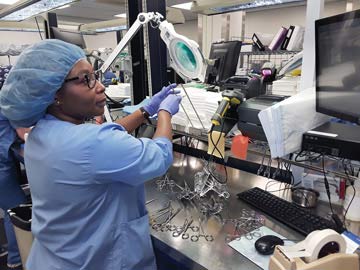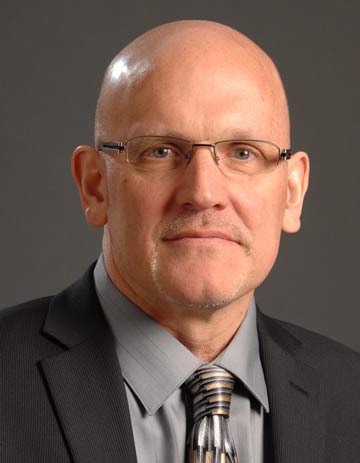Baptist Health's enormous campus is a one-stop shop for essential services.
 PHOTO CREDIT: Baptist Health
PHOTO CREDIT: Baptist HealthRENAISSANCE ROOM Baptist Health's new outpatient facility includes eight large ORs outfitted with the technology and space to perform surgeries in a wide range of specialties.
Health systems are moving in the direction of bringing traditional hospital services, including surgery, closer to where their patients live. In the process, they're creating large outpatient health centers that do many of the things hospitals have done for years, but without the ER and inpatient critical care components — and reflecting the times in which we live, without acute COVID-19 patients being treated on site.
This kind of next-generation facility opened its doors to patients in late November. Baptist Health's new 112,000-square-foot wellness and medical complex in Plantation, Fla., is providing residents of Broward County with orthopedics, cardiology, spine, cancer and endocrinology services and surgeries, urgent and primary care, diagnostic imaging, physical therapy and a pharmacy — all in one outpatient campus.
The arrangement allows providers in the facility's urgent care clinic, diagnostic imaging center and ASC to work together closely. Thanks to them all being on the same site, Baptist says it can expedite treatment for injured and sick patients who walk into urgent care to produce better, quicker outcomes.
The full-service diagnostic imaging center is equipped with CT, MRI, ultrasound and PET-CT capabilities, as well as breast imaging and interventional procedures to serve numerous specialties. "From the patient's perspective, it's a real convenience to have imaging performed on the same day and in the same place as your doctor appointments," says Lawrence Elgarresta, MD, medical director of imaging at the facility. "From a doctor's perspective, they're able to consult with other specialists in the same facility, allowing them to provide even better care to their patients."
The site's ASC features eight large ORs equipped with the latest technology, including robotic assistance. "Whatever type of surgery patients require — robotic, orthopedic, urologic, cancer, gynecologic, breast, ENT, plastic — can be done here," says John P. Diaz, MD, the center's medical director. The ASC is designed for same-day surgeries and less-than-23-hour stays, but can accommodate overnight stays if necessary.
Describing the center as a "health hub" that provides a more convenient, seamless patient experience, Baptist points to the facility's patient-centric design, which focuses on wellness as an integral part of health care. "We'll always be here for you when you're sick or injured," says Baptist Health COO and Executive Vice President Bo Boulenger, "but we also want to be a trusted resource for those who want to incorporate physical and emotional wellness into their daily lives."
.svg?sfvrsn=be606e78_3)



.svg?sfvrsn=56b2f850_5)